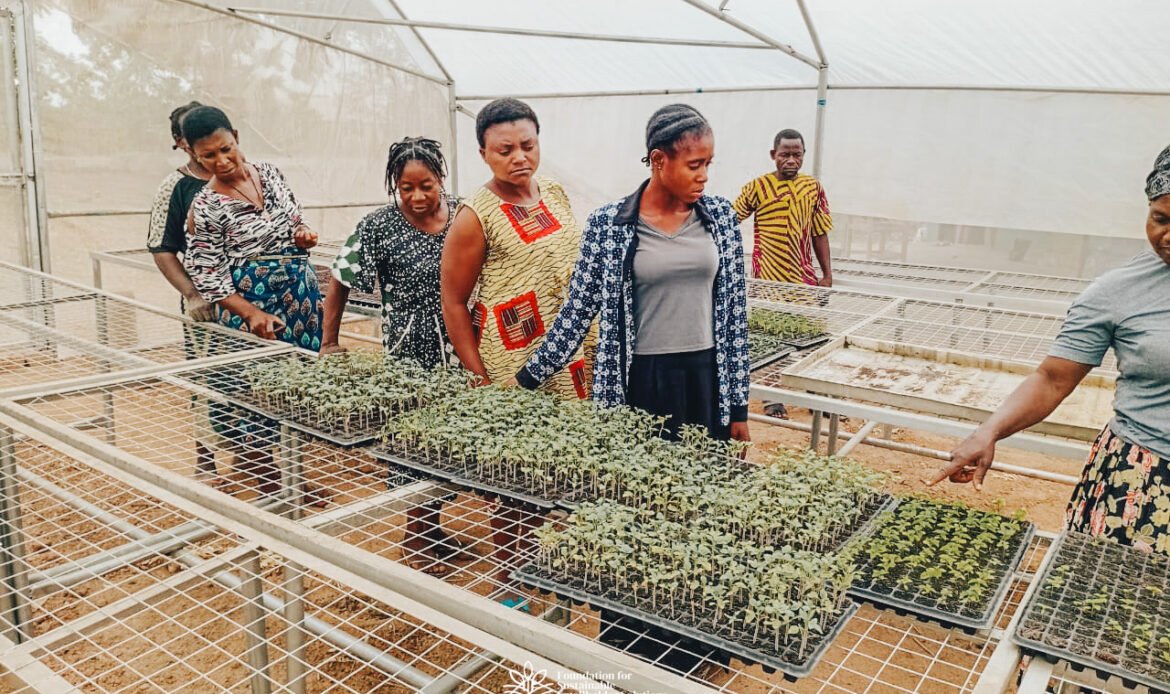In 2020, the Foundation (operating at the time as Syngenta Foundation Nigeria) commissioned a survey of 195 smallholder tomato producers in Kano and Jigawa States to evaluate their perceptions, practices and adoption of tomato seedling technologies. The survey, conducted between January and March, utilised a multistage sampling design and applied descriptive statistical methods to analyse the socio-economic characteristics of respondents, their agronomic practices, and the extent of technology adoption.
The sample population was relatively young, with a mean age of 38 years, predominantly male (86 percent) and married (88 percent), and reported household sizes averaging 11 persons, substantially above the national mean of 4.7. Farming constituted the primary livelihood for 97 percent of respondents, who reported an average of 18 years’ general farming experience and 12 years’ specific experience in tomato production.
The findings provide an empirically grounded basis for interventions targeting the tomato value chain in Nigeria. They highlight critical entry points for policy-makers, seed companies and development partners, particularly in relation to strengthening seed systems, expanding farmer training and facilitating seedling enterprise development as pathways to enhanced productivity and rural livelihoods.
Key findings
- Scale of production. Farmers operated on smallholdings, cultivating an average of 3.5 hectares, of which tomatoes occupied approximately 2 hectares. Variety choice was concentrated, with Plum tomato (UTC) accounting for 34 percent of cultivation, followed by Roma (20 percent) and Chibli (15 percent).
- Seedling practices. The majority (82 percent) relied on recycled seeds for seedling propagation. Only 12 percent purchased and transplanted seedlings, while 6 percent practised direct seeding. Almost all respondents (98 percent) raised seedlings in open fields, with only 2 percent adopting modern nursery trays, indicating minimal exposure to improved propagation systems.
- Input use. Fertiliser application was widespread, dominated by Golden NPK (85 percent) and Urea (15 percent), with average reported costs of ₦13,600 and ₦8,000 respectively. Herbicides such as Grazon and Roundup, and insecticides such as Best, Lara Force and Karate were widely used, although application practices were not consistently aligned with recommended agronomic guidelines.
- Awareness–adoption gap. While awareness of certain technologies was high, 96 percent were aware of improved seed varieties and 83 percent of fertiliser application, adoption rates were considerably lower, at 70 percent and 81 percent respectively. More knowledge-intensive practices, such as proper seed spacing and recommended planting methods, recorded adoption levels as low as 16–35 percent despite moderate awareness.
- Extension and training gaps. Access to institutional support was severely limited: 88 percent of respondents reported no contact with extension or advisory services. Where training occurred, it was predominantly oral (11 percent) with negligible demonstration-based delivery, limiting translation of knowledge into practice.
- Entrepreneurial potential. Despite constraints, farmer perceptions were highly favourable towards seedling enterprises. Ninety-five percent indicated willingness to purchase seedlings if available, while an equal proportion expressed interest in producing and selling seedlings. This indicates strong latent demand for commercial seedling enterprises as viable agribusiness models.
Policy implications
- Strengthen extension systems. Revitalisation of both public and private extension services is required, with emphasis on demonstration-led, hands-on training in seedling propagation, nursery management and good agronomic practices.
- Expand seed access. Seed companies and agro-dealers should prioritise the distribution of hybrid and improved tomato seeds into rural markets. Packaging should include embedded agronomic guidance to improve uptake and effective utilisation.
- Support seedling enterprises. Given the high willingness to buy and sell seedlings, there is clear justification for investment in community-based and private nursery enterprises. Such models could enhance input supply, generate rural employment and improve seedling quality.
- Promote modern propagation methods. Transition from open-field nurseries to nursery trays and protected seedbeds should be incentivised through training, input support and financing mechanisms, thereby improving seedling vigour, survival and productivity.
Conclusion
This study demonstrates that smallholder tomato farmers in Northwest Nigeria are experienced, motivated and open to technological change. However, systemic deficiencies in seed quality, propagation practices and extension support continue to constrain productivity. Addressing these gaps through strengthened extension services, enhanced seed systems and promotion of seedling enterprises offers a scalable pathway to increase yields, improve livelihoods and consolidate Nigeria’s tomato value chain.
The Foundation delivers applied research, policy advisory and field programmes that translate evidence such as this into practical interventions aligned with farmer realities. For development partners and policy-makers seeking to accelerate tomato sector transformation, the full study, Smallholder farmers’ perception on tomato (Solanum lycopersicum) seedling technologies in the Northwest zone of Nigeria (Gabriel et al., 2021), is available here.


